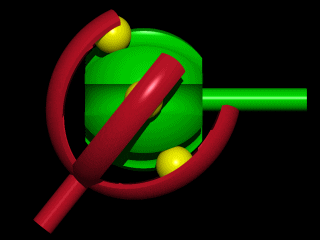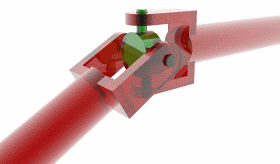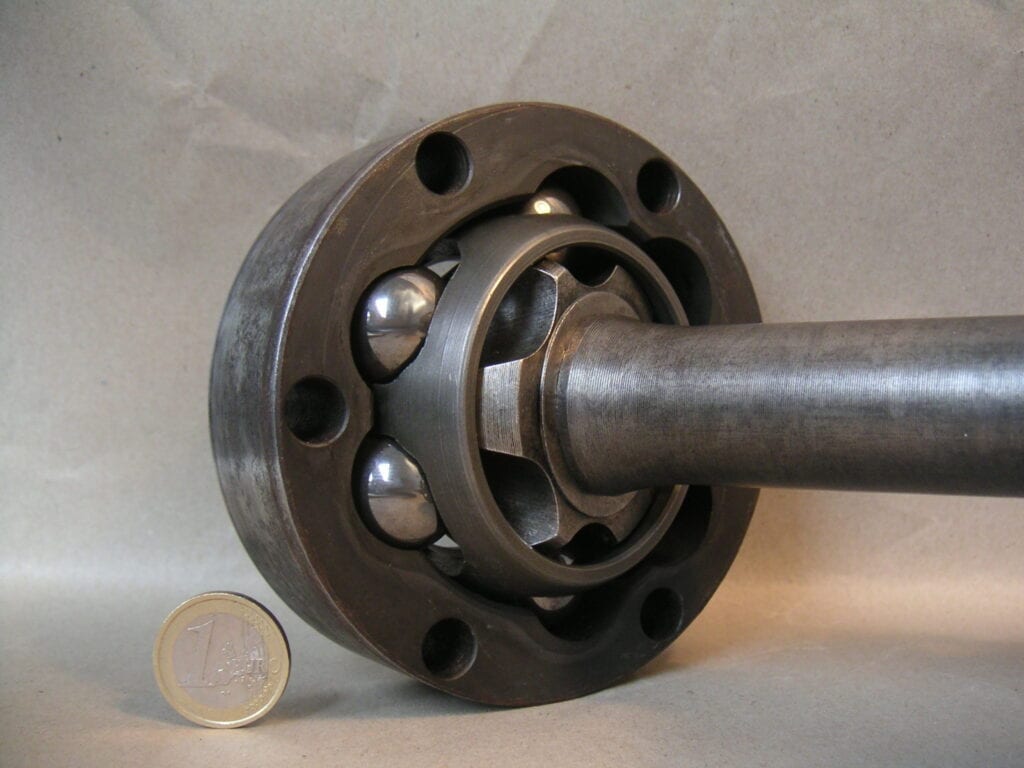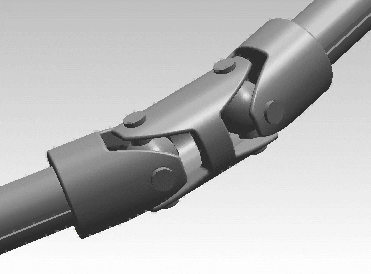
Constant Velocity Joint (CV joint)
Content
Hinges (often called a homokinetic hinge (from the other-gr. Ὁμός "equal / equal" and "motion", "speed"), eng. Constant-velocity- CV joints) allow the shaft to transmit power through a variable angle, with a constant rotation speed without significantly increasing friction or beating. They are mainly used in front wheel drive vehicles.

The carriages are protected by a rubber bushing, usually filled with molybdenum grease (contains 3-5% MoS2). In the case of cracks in the sleeve, water entering the inside leads to the reaction MoS2 (2) H2O MoO2 (2) H2S, since molybdenum dioxide has a strong abrasive effect.
History
The cardan shaft, one of the first means of transmitting power between two shafts at an angle, was invented by Gerolamo Cardano in the 16th century. It was unable to maintain a constant speed during rotation and was improved by Robert Hooke in the 17th century, who proposed the first constant speed connection, consisting of two propeller shafts offset by 90 degrees to eliminate speed fluctuations. We now call this a double gimbal.
Early automotive powerplants
Early front wheel drive systems used in the Citroën Traction Avant and Land Rover front axles and similar four-wheel drive vehicles used universal joints instead of constant velocity constant velocity joints. They are easy to make, can be incredibly strong, and are still used to provide a flexible connection in some drive shafts where there is no rapid movement. However, they become "jagged" and difficult to rotate when working at maximum angles.

The first joints with equal angular velocities
As front-wheel drive systems become more popular and cars like the BMC Mini use compact transverse motors, the disadvantages of front-wheel drive are becoming more apparent. Based on the design patented by Alfred H. Rsepp in 1927 (the Tracta hinge, designed by Pierre Fenay for Tracta, was patented in 1926), constant speed hinges solve many of these problems. They provide smooth power transmission despite a wide range of bending angles.
Path connection
Rzeppa hinge
The Rzeppa hinge (invented by Alfred H. Rserra in 1926) consists of a spherical body with 6 outer grooves in a similar female outer shell. Each groove leads one ball. The input shaft fits into the center of a large steel star gear that sits inside a circular cage. The cell is spherical, but with open ends, and usually has six holes around its perimeter. This cage and gears are placed in a threaded cup to which the threaded shaft is attached. Six large steel balls sit inside the cup grooves and fit into cage holes tucked into sprocket grooves. The output shaft of the cup passes through the wheel bearing and is secured with a shaft nut. This compound can withstand large angle changes when the front wheels are rotated by the steering system; typical Rzeppa boxes can be skewed by 45-48 degrees while some can be skewed by 54 degrees.

Three-finger hinge
These joints are used at the inner end of the vehicle's drive shafts. Developed by Michel Orijn, Glaenzer Spicer from France. The hinge has a three-finger bush with slots to the shaft, and on the thumbs there are barrel-shaped protruding bushes on needle bearings. They come in a cup with three matching channels attached to the differential. Since the movement is only in one axis, this simple scheme works well. They also allow for axial "dipping" movement of the shaft so that motor wobble and other effects do not stress the bearings. Typical values are an axial shaft movement of 50 mm and an angular deviation of 26 degrees. The hinge does not have as much angular range as many other types of hinges, but is generally cheaper and more efficient. Therefore, it is commonly used in rear wheel drive configurations or inside front wheel drive vehicles where the range of motion required is less.

Questions and answers:
How does the constant velocity joint work? The torque comes from the differential through the shafts connected by the hinges. As a result, both shafts, regardless of the angle, rotate at the same speed.
What are the CV joints? Ball (the most efficient serial version), tripoid (spherical rollers, not balls), paired (cardan-type hinges, more durable), cam (used in heavy vehicles).